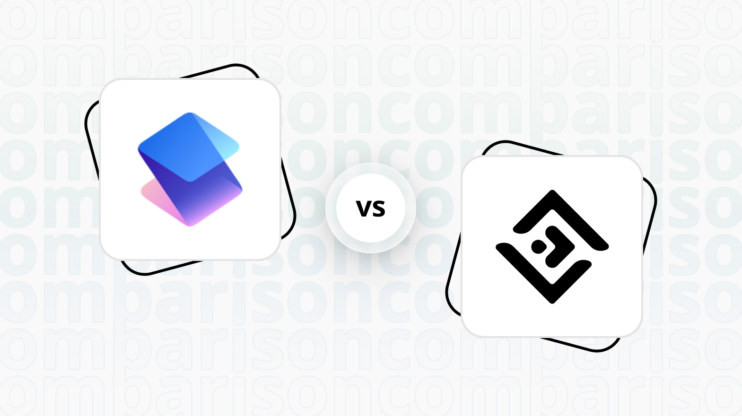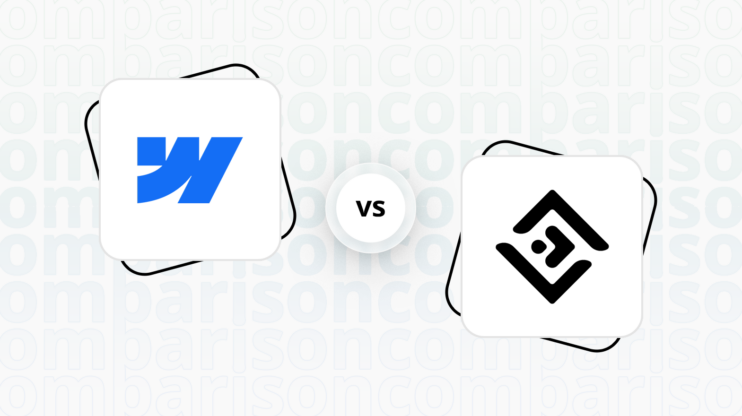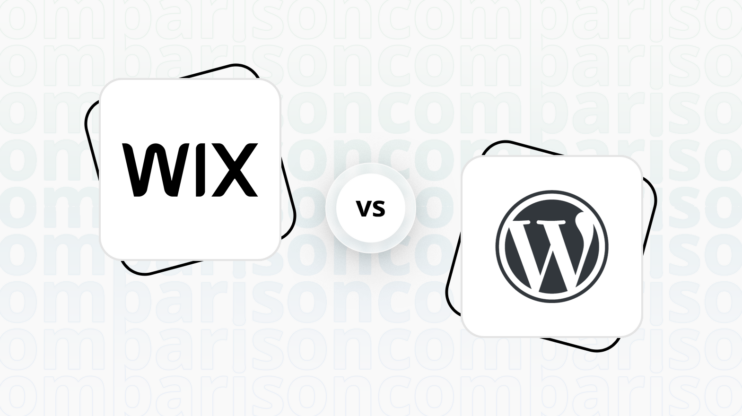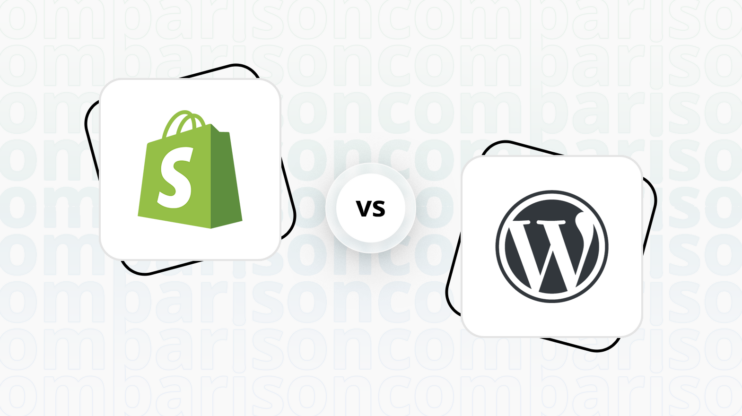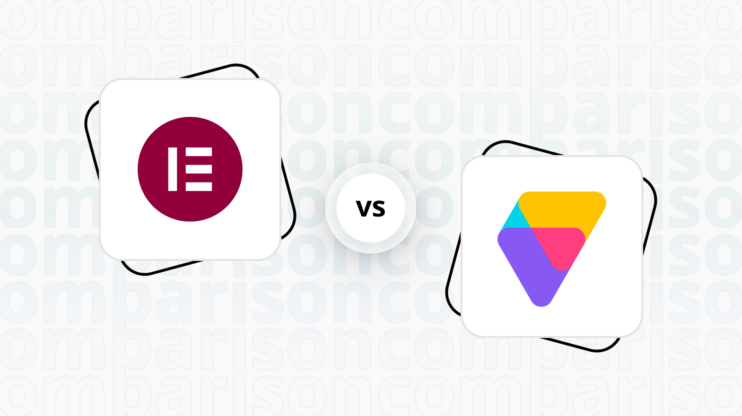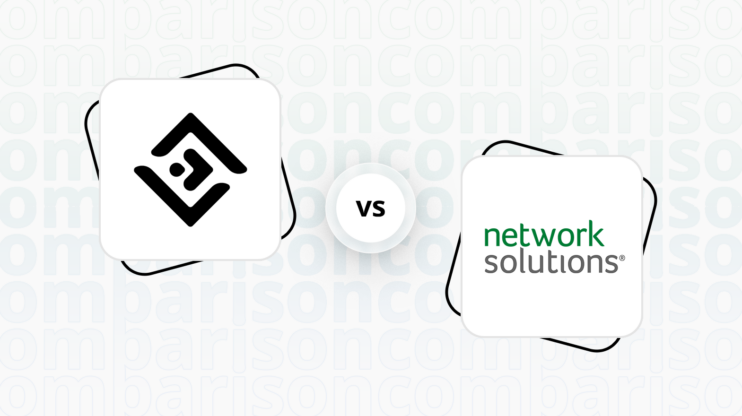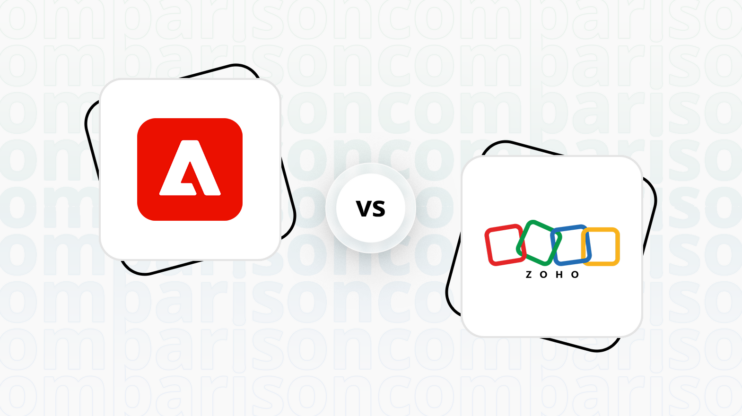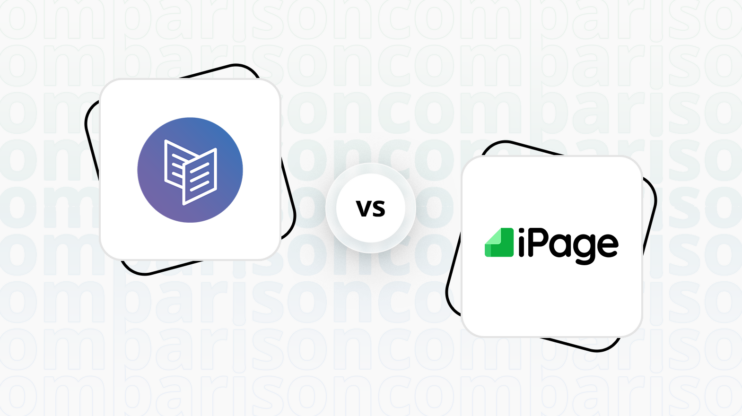Final verdict
Webflow and Siter.io cater to different user needs, with Webflow emerging as the more robust option for professional designers and larger-scale projects.
-
Siter.io (Overall Grade: 5.1/10)
is praised for its user-friendly interface and unique design tools, such as the drag-and-drop editor and Figma integration, making it a good choice for users without coding knowledge. It excels in ease of use and product testing options, offering a free version that allows users to test all premium features. However, it falls short in ecommerce capabilities, hosting quality, website speed optimization, customer support, and security, limiting its appeal for more complex or larger-scale projects. -
Webflow (Overall Grade: 7.9/10)
, on the other hand, is recognized for its powerful design tools, flexible CMS, and top-tier hosting services, making it a comprehensive solution for creating custom, responsive websites. It stands out in design functionalities, ecommerce features, website editors, hosting quality, website speed optimization, marketing features, customer support, and security. Although it has a steeper learning curve, Webflow offers extensive learning resources to help users master the platform.

|

|
|
|---|---|---|
|
Design functionalities & templates |
7.5 |
8.6 |
|
Ease of use |
8.3 |
7.5 |
|
Ecommerce |
3.4 |
8.5 |
|
Website Editors |
7.8 |
9.0 |
|
Product testing options |
8.2 |
6.3 |
|
Price |
8.1 |
8.0 |
|
Hosting quality |
3.9 |
8.9 |
|
Website speed optimization |
1.5 |
8.1 |
|
Plugins and integrations |
5.5 |
5.5 |
|
Marketing features |
2.6 |
7.8 |
|
Customer support |
4.1 |
8.3 |
|
Security |
6.8 |
7.8 |
|
AI capabilities |
0.0 |
8.3 |
|
User Management |
7.1 |
8.3 |
| Overall |
5.1 |
7.9 |
Best for ecommerce
 3.4
3.4
 8.5
8.5
Verdict
: For those prioritizing ecommerce functionality, Webflow is the superior choice due to its comprehensive features and higher ecommerce score.
-
Siter.io
: While Siter.io offers basic ecommerce capabilities and unique design tools, it falls short in providing a robust ecommerce solution. Its lower ecommerce score reflects limitations in payment processing, product management, and additional ecommerce features. -
Webflow
: With a strong ecommerce score, Webflow stands out for its advanced ecommerce features, including extensive customization options, a wide range of payment gateways, and powerful marketing tools. It’s designed to support businesses at various scales, from small online stores to large ecommerce operations.
Best for informational & business websites
 7.2
7.2
 8.6
8.6
Verdict
: Webflow stands out as the superior choice for informational and business websites, thanks to its higher score and robust design capabilities, making it ideal for professionals seeking custom, responsive sites.
-
Siter.io
: Siter.io offers a user-friendly platform with unique design tools, making it a good option for those without coding knowledge. However, its focus on simplicity and the lack of detailed hosting information may limit its appeal for more complex informational sites. -
Webflow
: With a higher score and a platform designed for professional use, Webflow excels in creating custom, responsive websites. Its extensive template library and powerful design tools cater to a wide range of business and informational site needs, making it the preferred choice for users looking for flexibility and advanced capabilities.
Detailed comparison
Design functionalities & templates
Design FunctionalitiesRepresents how well each platform allows for creative design and customization of websites.Score Components:
- Template Variety (30%): Range and quality of design templates.
- Customization (30%): Flexibility and options for design alterations.
- User Interface (20%): Ease and intuitiveness of the design process.
- Responsiveness (10%): Adaptability to different devices and screen sizes.
- Innovation (10%): Unique design features and tools.
 7.5
7.5
 8.6
8.6
🏆
Winner: Webflow.
If you’re looking for a platform that offers more creative control, a wide array of design features, and a larger number of templates, Webflow is the preferred choice.
Siter.io includes a handful of customizable templates for various website types, such as landing pages, portfolios, and e-commerce sites, ensuring users can start with a solid foundation and tailor each site to their needs. However, the limited number of templates is compensated with a UI which is very similar to design tools like Figma and AdobeXD. Additionally Siter.io has built in Figma plugin, which helps to export Figma designs directly to Siter.io platform, and make changes and tweaks right on Siter.io.
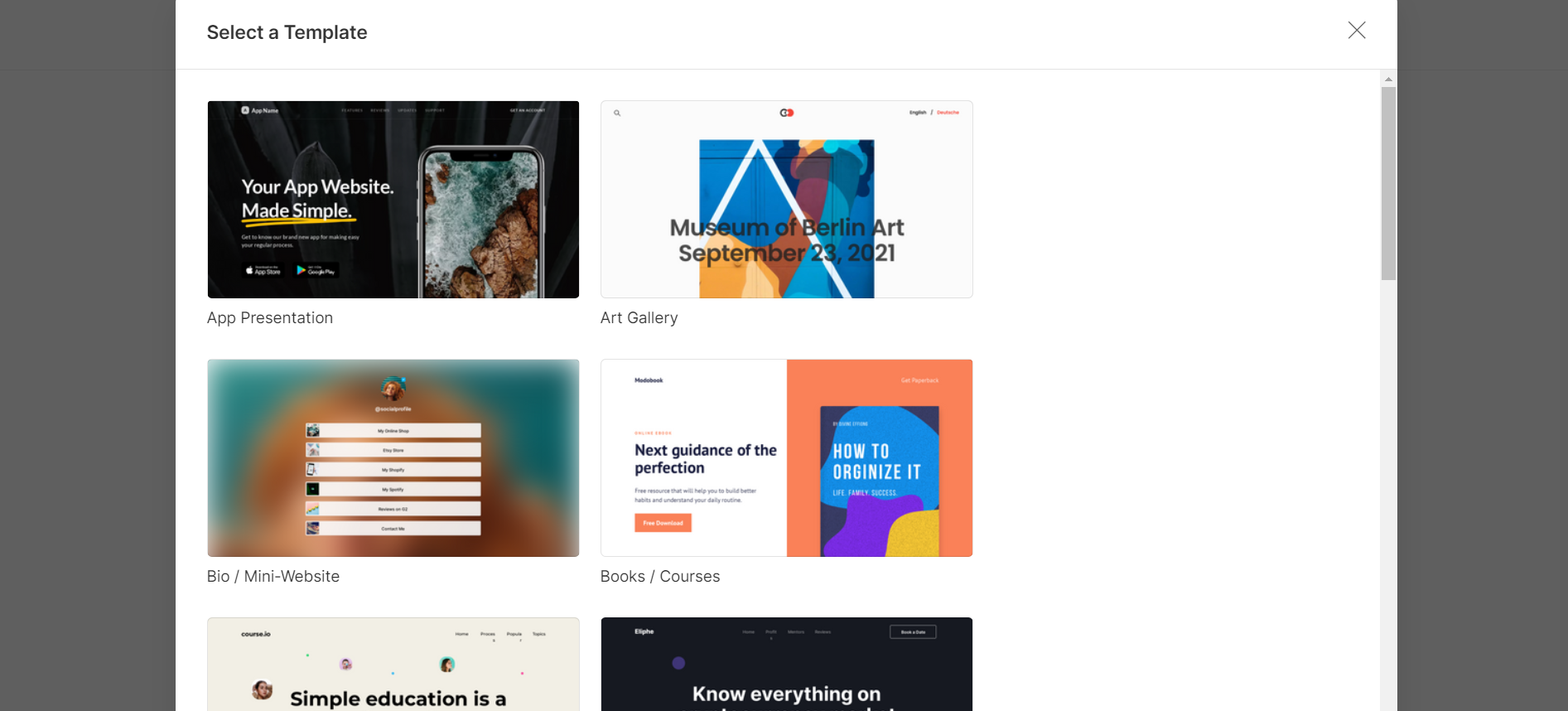

Compared to Siter.io, Webflow delivers a robust design experience with a diverse range of template and customization options. Boasting over 1000 pre-built templates covering various industries and website types, including free and premium options, Webflow ensures a constantly evolving library for users. Templates are categorized for easy browsing, considering industry, website type, style, and features. The design customization features include a visual drag-and-drop editor for real-time adjustments, fine-grained control over every aspect of the design, and the ability to inject custom code for advanced users seeking additional personalization and unique functionalities.
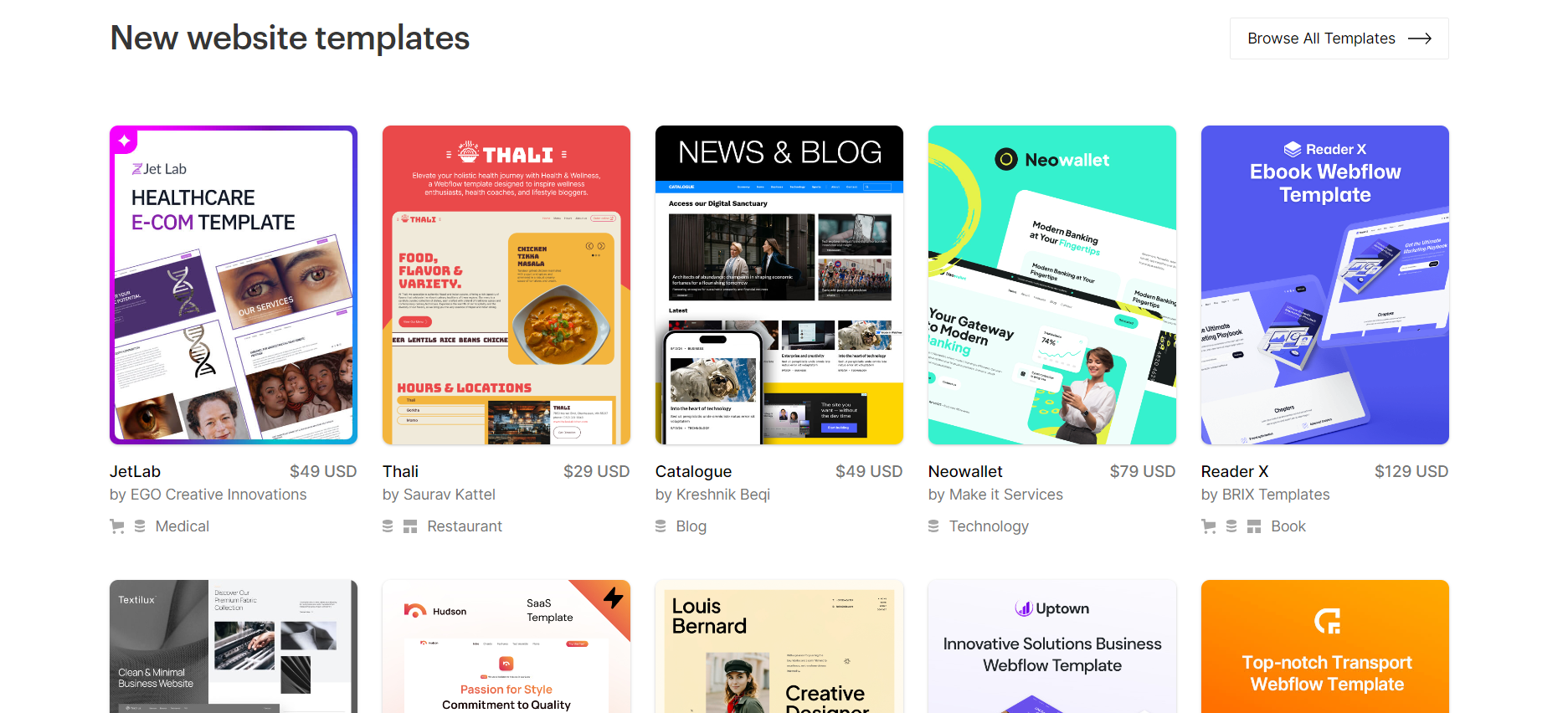
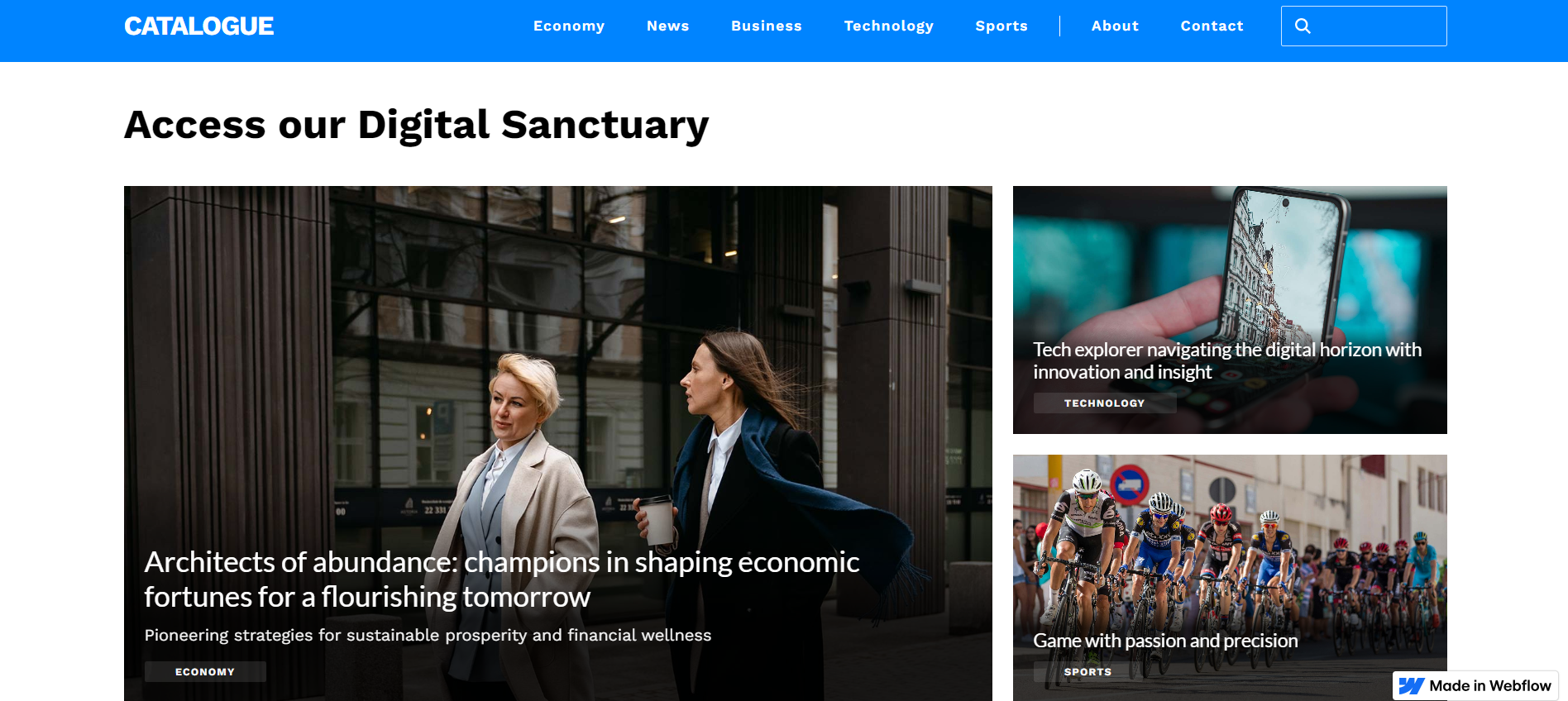
Get a head start on website creation with AI
Create a custom website tailored to your business needs 10X faster with 10Web AI Website Builder!
Ease of use
Ease of useReflects the platform’s overall user-friendliness.Score
Components:
- Learning curve (40%): Quickness and ease of getting started.
- Interface design (30%): Simplicity and intuitiveness of layout.
- User guidance (20%): Quality of tutorials and support.
- Flexibility (10%): Adaptability to various user skills.
 8.3
8.3
 7.5
7.5
🏆 Winner: Siter.io
. With a score of 8.3, Siter.io is designed for ease of use, catering to both beginners and experienced designers with its intuitive interface and drag-and-drop functionality. Webflow, scoring 7.5, is user-friendly for experienced designers and developers, but beginners may find it challenging due to a steeper learning curve.
Learning Resources
🏆 Winner: Webflow
. Both platforms offer solid learning resources, but Webflow goes a step further with its comprehensive set of learning resources for individuals seeking proficiency in the platform, including Webflow University and a thriving community across multiple platforms.
For ecommerce
EcommerceMeasures the platform’s effectiveness in supporting online business activities.Score Components:
- Ecommerce themes and templates (20%): Variety and design of templates.
- Product management (25%): Ease of managing and organizing products.
- Payment options (25%): Variety and convenience of payment methods.
- Ecommerce features (20%): Features for managing an ecommerce store.
- Integration (10%): Compatibility with external e-commerce tools and services.
 3.4
3.4
 8.5
8.5
When it comes to ecommerce, Webflow clearly outperforms Siter.io. With a higher ecommerce score of 8.5 compared to Siter.io’s 3.4, Webflow offers a comprehensive set of ecommerce features, including easy store creation without coding, extensive customization options, product management with variations, inventory tracking, integration with major payment gateways, automated shipping calculations, tax configuration, and marketing tools like abandoned cart recovery and email marketing.

|

|
|
|---|---|---|
|
Ecommerce themes and templates |
4.5 |
7.5 |
|
Product page customization |
6.5 |
8.3 |
|
Payment processing and commissions |
3.0 |
7.8 |
|
POS capabilities |
2.0 |
6.5 |
|
Payment gateways |
3.5 |
8.0 |
|
Product numbers |
2.5 |
7.0 |
|
Additional ecommerce features |
3.0 |
7.9 |
Siter.io ecommerce features:
- Shopping cart
- Checkout
- Purchase button
Webflow ecommerce features:
- Checkout and Payment Processing with Stripe, PayPal, etc.
- Marketing and Promotions
- Tax and Shipping calculations
Ecommerce themes & templates
Siter.io has only a few ecommerce specific templates, however its built-in Figma integration enables the use of a variety of third-party website templates designed in Figma to create a fully functional website directly on the platform. On the other hand, Webflow offers a diverse range of ecommerce themes and templates designed to cater to various types of online stores, from fashion and technology to artisan crafts and children’s products. Each template comes equipped with built-in ecommerce functionality, allowing you to easily add products and manage your store without the need for coding.
Product page customization
Siter.io prioritizes its design capabilities, offering a wide range of customization options that are only limited by the user’s skill level. In contrast, Webflow offers extensive customization options for eCommerce product pages, allowing users to design and personalize their pages without coding. It provides tutorials for creating product pages from scratch, offers responsive templates for various devices, and allows users to add custom code and dynamic content using Webflow’s CMS for maximum customization flexibility.
Payment processing
Siter.io primarily serves as a website design tool rather than a dedicated ecommerce platform. While it does allow for the creation of ecommerce websites, its functionality for integrating payment gateways is quite limited. However, it’s important to note that the platform does support custom code injection, enabling users to integrate third-party payment widgets like PayPal or Stripe. On the other hand, Webflow provides a flexible and secure platform for payment processing and ecommerce through integrations with leading payment gateways like Stripe and PayPal. This allows users to accept a wide range of payments, including credit card transactions directly from their websites. Given the versatility of Stripe and PayPal, businesses can manage online sales efficiently, and these integrations likely support various transaction types, potentially including POS transactions for physical sales environments.
Website Editors
Website EditorsEvaluates the platforms’ website building and editing capabilities.Score Components:
- Customization tools (40%): Range and power of editing features.
- Editor usability (30%): User experience within the editor.
- Design flexibility (20%): Freedom in layout and design changes.
- Update and maintenance ease (10%): Simplicity of updating and maintaining the site.
 7.8
7.8
 9.0
9.0
🏆
Winner: Webflow
. With a score of 9.0, Webflow’s editor is praised for its intuitive visual interface that simplifies the process of designing and editing responsive websites without requiring deep technical knowledge. It offers a perfect blend of ease of use for beginners and the flexibility for more advanced users, enabling significant cost savings by allowing users to customize and manage their sites without hiring professionals.
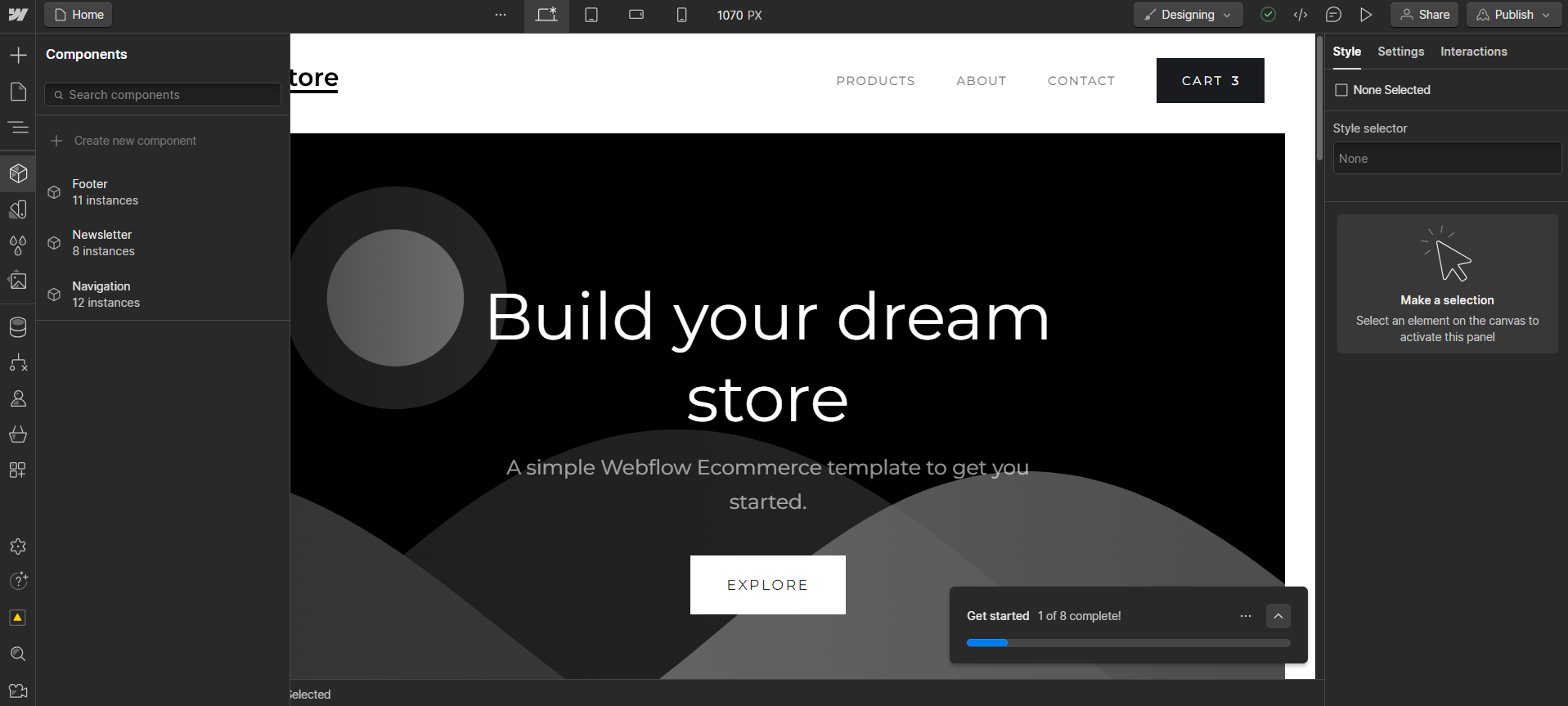
Siter.io’s editor, scoring 7.8, is designed to empower users with the ability to create websites seamlessly without any coding skills. It features an intuitive interface, real-time collaboration, and Figma integration, enhancing productivity and creativity for designers and teams. The editor supports inserting custom code for additional functionality, accessing thousands of free icons, and integrating with Unsplash for high-quality, royalty-free photos.
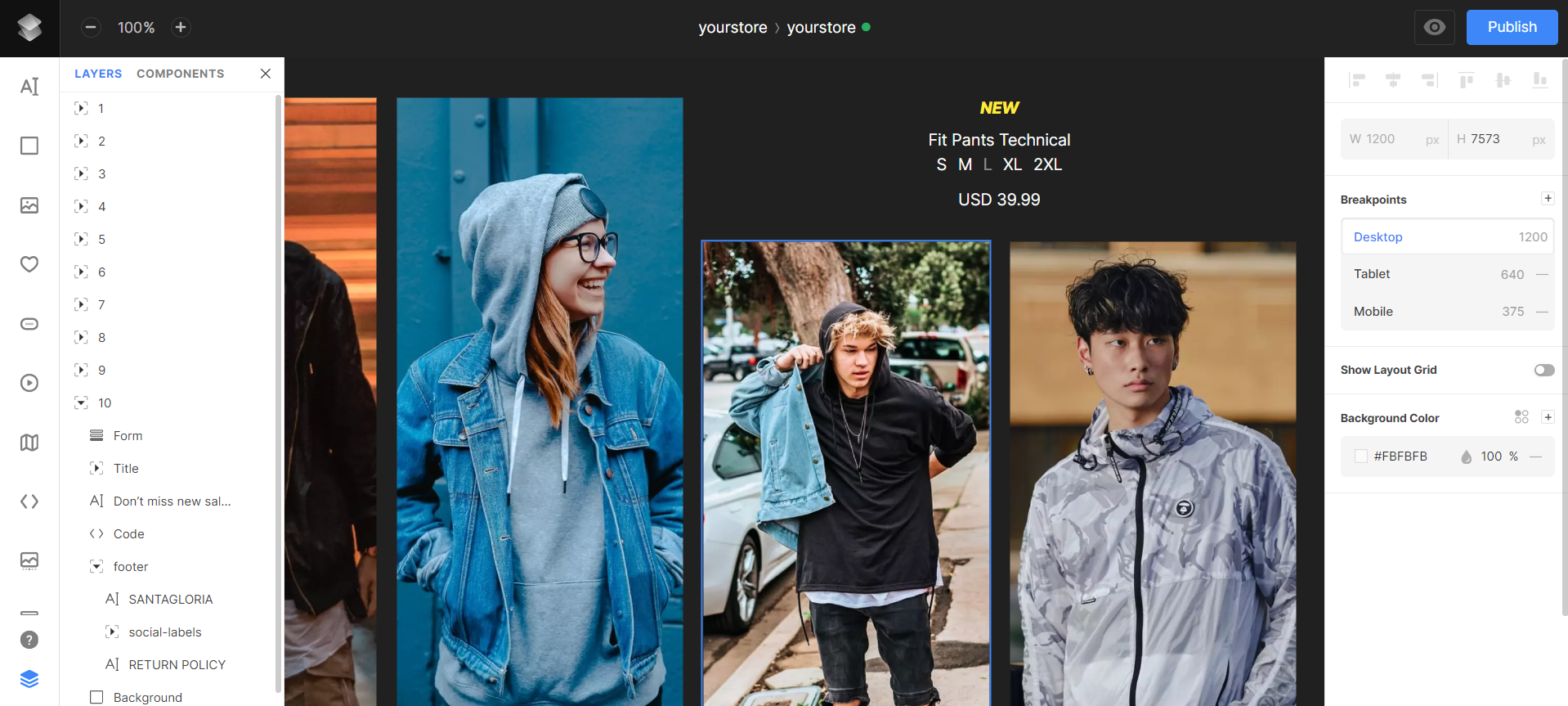
Mobile editor/app
 0
0
 7.0
7.0
🏆
Winner: Webflow
. Neither Siter.io nor Webflow have an official mobile editor app. However, Webflow has a third-party app called EditFlow, created by a community member for Webflow users. This gives Webflow an edge over Siter.io in terms of mobile editing. Currently, the EditFlow app is only available for iOS.
Product testing options
Product Testing OptionsAssesses the options for trying out platform features before commitment.Score Components:
- Trial quality (40%): Extent and usefulness of the trial or free version.
- Feature accessibility (30%): How many features are available to test.
- Trial duration (20%): Length of the trial period.
- Ease of transition (10%): Smoothness of moving from trial to paid plans.
 8.2
8.2
 6.3
6.3
Overall Result
:
Siter.io Wins
. Siter.io scores 8.2 in product testing options, while Webflow scores 6.3. Siter.io offers a free version that allows users to test all premium features, providing a comprehensive evaluation of the platform. On the other hand, Webflow also offers a free version, but only allows testing of some basic features.

|

|
|
|---|---|---|
|
Free Plan |
Yes | Yes |
|
Trial Duration |
No | No |
|
Testing Premium Features |
All features with free plan |
Basic features with free plan |
|
Money Back Guarantee |
No | No |
Price
PriceLooks at the cost-effectiveness and value for money of each platform.Score Components:
- Plan value (40%): What each pricing tier offers.
- Transparency and clarity (30%): Clearness of pricing structures.
- Flexibility of plans (20%): Range of options to suit different budgets.
- Hidden costs (10%): Additional expenses not included in the plan.
 8.1
8.1
 8.0
8.0
Siter.io and Webflow have similar pricing scores, but Webflow offers more advanced features and an enterprise plan for larger businesses.

|

|
|
|---|---|---|
|
Free |
Start (Free/month): Includes unlimited teammates, up to 10 pages, 3 forms, Figma plugin, and SSL certificate. Additional websites are free, and SEO and page speed features are not included. Additionally, it’s not possible to publish any of the websites with the free plan. |
Starter (Free): Limited features for new sites, including 2 static pages and 50 form submissions lifetime. |
|
$0-$10 |
Solo ($8/month): For 1 website and includes 2 editors, up to 10 pages, 3 forms, Figma plugin, and SSL certificate. Additional editors cost $4 each. Value for price: 6.0 |
No offering at this amount. |
|
$10-$20 |
Plus ($14/month): Offers 3 websites with 4 editors, up to 50 pages, 5 forms, Figma plugin, and SSL certificate. Additional editors cost $6 each. Value for price: 7.5 |
Basic ($18/month): Suitable for simple sites with a custom domain, including basic SEO controls and 500 monthly form submissions. And 100 pages. Value for price: 6.5 |
|
$20-$30 |
Pro ($29/month): Provides 5 websites, 6 editors, unlimited pages, unlimited forms, Figma plugin, and SSL certificate. Additional websites cost $8 each. Value for price: 8.5 |
CMS ($29/month): For content-driven sites with 2,000 CMS items, 1,000 monthly form submissions, and full API access. And 150 website pages. Value for price: 7.5 |
|
$40-$45 |
No offering at this amount. |
Standard ($42/month): For new businesses with up to 500 ecommerce items, includes basic ecommerce features, and 2% transaction fee Value for price: 8.5 |
|
$45-$50 |
No offering at this amount. |
Business ($49/month): High traffic capacity, advanced features like site search, and up to 10 content editors. Value for price: 8.0 |
|
$80-$90 |
No offering at this amount. |
Plus ($84/month): Higher volume businesses with 0% transaction fees, up to 5,000 ecommerce items, and advanced features. Value for price: 9.0 |
|
$200+ |
No offering at this amount. |
Advanced ($235/month): Scalable solution for large online stores with up to 15,000 ecommerce items and the highest caps and 0% transaction fees. Value for Price: 9.5 |
location. As a result in rare cases the prices displayed here can differ from the ones you see on their
websites.
Hosting quality
Hosting
qualityExamines the reliability and performance of the hosting solutions.Score Components:
- Uptime (40%): Consistency and reliability of website availability.
- Speed (30%): Loading times and performance.
- Bandwidth and storage (20%): Sufficiency of resources provided.
- Data centers (10%): Quality and distribution of hosting infrastructure.
 3.9
3.9
 8.9
8.9
Winner: Webflow
. Webflow offers managed hosting included in all of their plans, with a 99.99% uptime and a guarantee for enterprise plans. They leverage a globally distributed network of data centers from Amazon Web Services (AWS) and Fastly. Siter.io, on the other hand, offers cloud-based hosting but lacks transparency about uptime, data centers, and other key hosting details. This lack of information results in a lower rating for Siter.io.

|

|
|
|---|---|---|
|
Do they offer hosting? |
Yes, but lacks detailed information |
Yes, included in all plans |
|
Data Centers: |
Not disclosed |
Globally distributed network of data centers from AWS and Fastly |
|
Type of hosting: |
Cloud-based hosting |
Managed Hosting |
|
Uptime: |
Not disclosed |
99.99% |
|
Uptime Guarantee: |
No |
Yes, for Enterprise plan |
Website Speed Optimization
Website Speed OptimizationEvaluates optimization of website loading timesScore Components:
- PageSpeed Score (30%): Google’s score indicating performance optimization.
- Loading Time (30%): The average time until a website is fully interactive.
- Mobile Optimization (15%): Optimization effectiveness for mobile devices.
- Resource Optimization (15%): Optimizing images, scripts, and other heavy resources.
- CDN Usage (10%): Use of CDN to enhance speed across geolocations.
 1.5
1.5
 8.1
8.1
🏆 Winner: Webflow
Both Siter.io and Webflow prioritize website performance and speed, but Webflow’s comprehensive approach to speed optimization and its transparency about performance metrics give it a clear edge over Siter.io.

|

|
|
|---|---|---|
|
Focus |
Mobile Responsiveness, SEO optimization |
Custom Cache Settings, Custom Element Lazy Loading, Automatic Minification, Responsive templates, CDN |
|
Performance Tools |
Not disclosed |
Google Lighthouse, PageSpeed Insights |
|
Key Strategies |
Mobile Responsiveness, SEO optimization |
Custom Cache Settings, Custom Element Lazy Loading, Automatic Minification, Responsive templates, CDN |
|
Load Times |
Not disclosed |
Below 2 seconds average |
|
Page Speed Scores Range |
Not disclosed |
77.2/100 |
|
Core Web Vitals Improvement |
Not disclosed |
Improving components’ usability, and emphasis on LCP, FID and CLS |
Webflow’s comprehensive approach to website speed optimization includes custom cache settings, custom element lazy loading, automatic minification, responsive templates, and CDN. This, combined with an average load time of below 2 seconds and a PageSpeed score of 77.2/100, indicates a high level of website speed optimization. Furthermore, Webflow places emphasis on improving components’ usability and Core Web Vitals, including LCP, FID, and CLS.
On the other hand, Siter.io focuses on mobile responsiveness and SEO optimization. However, it does not disclose any statistics about PageSpeed scores, load times, or Core Web Vital improvements, making it difficult to compare its performance with Webflow.
Get a head start on website creation with AI
Create a custom website tailored to your business needs 10X faster with 10Web AI Website Builder!
Plugins and integrations
Plugins and integrationsMeasures the range and effectiveness of additional plugins and integrations.Score Components:
- Variety of options (40%): Range of available add-ons.
- Integration smoothness (30%): Ease of integrating plugins into the site.
- Quality of plugins (20%): Functionality and reliability of the options.
- Custom integration capabilities (10%): Support for custom or third-party integrations.
 5.5
5.5
 5.5
5.5
🏆 Winner: Tie.
Both Siter.io and Webflow score 5.5 in plugins and integrations. Siter.io offers limited integrations, focusing more on its design capabilities, but it does support custom code injection for third-party plugins. On the other hand, Webflow doesn’t have traditional plugins or extensions but offers a built-in library of website elements and functionalities. It also integrates with a number of third-party services and tools.
The top integrations for Siter.io include Figma, Google Analytics, and Meta Pixel, while Webflow integrates with a diverse range of tools like Zapier, Google Analytics, Hotjar, Typeform, Wufoo, Gravity Forms, Shopify, Stripe, Gumroad, Intercom, Drift, Crisp, Airtable, Notion, and Forestry.
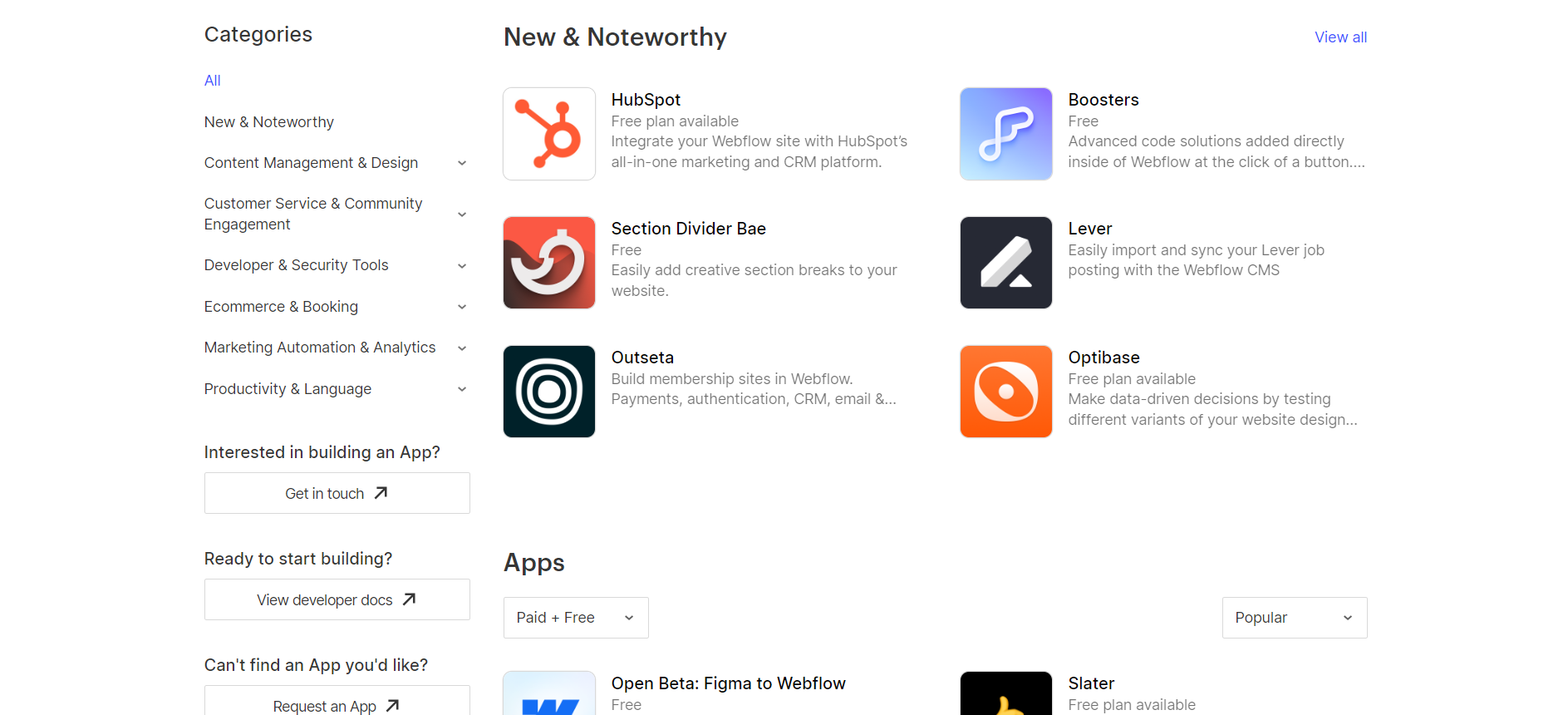
Marketing Features
Marketing featuresAssesses tools and options available for marketing.Score Components:
- SEO tools (40%): Effectiveness of SEO features.
- Marketing automation (30%): Availability and quality of marketing tools.
- Social Media integration (20%): Ease and depth of social media connectivity.
- Email marketing (10%): Quality and usability of email marketing tools.
 2.6
2.6
 7.8
7.8
🏆
Overall Winner: Webflow
. Webflow offers a more comprehensive set of marketing tools, including SEO tools, email marketing, blogging, social media integration, analytics and reporting, and ads and promotions. Siter.io, while offering some of these features, lacks in areas such as email marketing and social media integration.

|

|
|
|---|---|---|
|
SEO Tools |
Basic SEO features |
Comprehensive SEO tools |
|
Email Marketing |
No |
Yes |
|
Blogging |
Simple blog design |
Unlimited blogging capability |
|
Social Media Integration |
No |
Content sharing and audience engagement |
|
Analytics and Reporting |
Google analytics integration |
Comprehensive web traffic and behavior analysis |
|
Ads and Promotions |
Facebook Pixel integration |
Ad and promotion management |
Customer Support
Customer supportEvaluates the quality and availability of support options.Score Components:
- Response time (40%): Speed of support responses.
- Support quality (30%): Effectiveness and helpfulness of the support.
- Availability (20%): Range of support channels (phone, chat, email).
- Resource richness (10%): Quality of self-help and educational materials.
 4.1
4.1
 8.3
8.3
🏆 Winner: Webflow
. With a customer support score of 8.3, Webflow clearly outperforms Siter.io, which has a score of 4.1. Webflow offers 24/7 customer support through various channels, including live chat, email, and a community forum. They also provide extensive documentation and video tutorials to help users navigate their platform and troubleshoot common problems.
On the other hand, Siter.io primarily assists customers through its extensive help center and articles. While email support is available, the platform doesn’t specify the days or hours of operation for customer support. Furthermore, Siter.io does not offer any specific support for enterprises.
Security
SecurityLooks at the platforms’ security measures and data protection.Score Components:
- Data protection (40%): Safeguards for user and customer data.
- SSL and encryption (30%): Implementation of secure connections.
- Compliance (20%): Adherence to industry security standards.
- Regular updates (10%): Frequency of security updates and patches.
 6.8
6.8
 7.8
7.8
🏆
Winner: Webflow
. Webflow takes a comprehensive approach to security, implementing robust encryption techniques, strict access controls, regular system updates, and audits. They also offer two-factor authentication for added security.
On the other hand, Siter.io also prioritizes user privacy with a zero-knowledge storage system and multi-factor authentication. However, they do not provide detailed information about their website security measures, which makes Webflow a more reliable choice in terms of security.
AI Capabilities
AI capabilitiesMeasures the effectiveness of AI-driven features and tools.Score Components:
- Automation efficiency (40%): Impact of AI on streamlining processes.
- Personalization (30%): AI-driven customization for users or customers.
- AI-Assisted design (20%): Role of AI in website design and functionality.
- Data analysis (10%): Use of AI in interpreting user data and analytics.
 0.0
0.0
 8.3
8.3

|

|
|
|---|---|---|
|
AI Builder |
|
Announced for future release |
|
AI Ecommerce features |
|
|
|
AI content generation |
|
Announced for future release |
|
Additional AI features |
|
Announced for future release |
🏆 Winner: Webflow
. Although neither Siter.io nor Webflow currently have AI capabilities, Webflow has announced plans to introduce AI features in the near future. These include AI-powered design suggestions, content management, and website creation tools. Siter.io, on the other hand, does not have any AI capabilities and has not announced any plans to introduce such features. Therefore, Webflow is the winner in this category, with a score of 8.3 compared to Siter.io’s 0.0.
User Management
User ManagementAssesses the platforms’ capabilities in managing user roles, permissions, and accessibility.Score Components:
- Role Customization (40%): Flexibility in creating and defining user roles and
permissions. - Ease of Management (30%): User interface and tools for managing users.
- Access Control (20%): Effectiveness of access control measures for different user
levels. - Scalability (10%): Ability to manage a growing number of users efficiently.
 7.1
7.1
 8.3
8.3
🏆 Winner: Webflow
. Both Siter.io and Webflow offer collaborative features, but they differ in the number of editors allowed and the roles and access levels provided.
- Siter.io focuses on its real-time collaborative features, offering varying numbers of editors depending on the plan. Each plan provides access for 2 to 6 editors who can edit and design websites, with the option to include additional editors for an extra fee.
- In Webflow, the number of users who can edit a website and their access levels vary by plan. Core, Growth, and Enterprise plans offer unlimited editors, while others limit content editors to 3 or 10 per site. Access levels include Designer for full access and Editor for content editing. Workspace roles like Admin, Designer, and Editor ensure collaboration and security through features like the Site Activity Log and role-based permissions.
Webflow User Roles and Access Levels:
| Role | Description | Access Highlights |
|---|---|---|
| Workspace Owner | Full control over Workspace settings and member management. | Edit settings, manage billing, access/edit all sites, invite/remove members, manage permissions. |
| Workspace Admin | Similar to the owner with some restrictions. | Edit settings, manage billing, access/edit all sites, invite/remove members (except owner), manage permissions. |
| Workspace Member | Limited control focused on site interaction. | Download invoices, access/edit sites, invite members. |
| Workspace Guest | Temporary collaborators with limited access. | Access/edit sites. |
| Workspace Commenter | Limited to commenting for feedback on sites. | Create/view/resolve comments, preview sites. |
| Site Admin | Full control at the site level. | Manage permissions, delete/transfer sites, billing management, design and publish changes. |
| Can Design | Design capabilities with some restrictions on publishing. | Design in Designer, create/modify classes and components, publish changes with permission. |
| Can Design (Limited) | Restricted design capabilities for Enterprise customers. | Create new classes, modify created classes, limited publishing capabilities. |
| Can Edit | Content editing without full design privileges. | Edit text/links/images, manage assets, publish Collection items and Ecommerce products. |
| Can Comment (Site Level) | Commenting for feedback at the site level. | Create/view/resolve comments, preview sites. |
Additional Features

|

|
|
|---|---|---|
|
SSL Certificate |
|
|
|
Custom Domain |
|
|
|
Free Custom Domain Included |
|
|
|
International Domains |
|
|
|
Mobile Responsive |
|
|
|
Page Speed |
|
|
|
Website Builder Mobile App |
|
|
|
Convert a Website To An App |
|
|
|
Website Analytics |
|
|
|
Multilingual Sites |
|
|
|
Multiple Users |
|
|
User Feedback
Siter.io is highly appreciated by its users for its user-friendly interface and robust features, such as the drag-and-drop editor and customizable templates, which make website building accessible to teams without coding expertise. However, users agree that the platform could improve its integration options to further enhance workflow efficiency. Despite this, Siter.io effectively addresses the challenge of website creation without coding skills, benefiting designers, small business owners, and individuals seeking to establish an online presence or portfolio quickly and efficiently.
Webflow, on the other hand, receives high praise for its user-friendly interface, which eliminates the need for coding while offering extensive design flexibility. Users appreciate its scalability, cost-effectiveness, and seamless integration of essential features like forms and CMS. However, some users note a slight learning curve and occasional limitations, particularly in ecommerce functionalities and content management. Despite these minor drawbacks, Webflow proves to be a powerful tool for building and managing websites, offering robust features for both beginners and experienced developers, albeit with some room for improvement in certain areas like collaborative editing and content management.
The making of this blog
We followed a clear, step-by-step process to write and research this article.
FAQ
Which platform is better for beginners, Siter.io or Webflow?
Can I use both Siter.io and Webflow for ecommerce?
How do Siter.io and Webflow differ in terms of design flexibility and customization?
What are the major differences in pricing and value between Siter.io and Webflow?
Which platform offers better customer support, Siter.io or Webflow?










